There’s more to Skopje than statutes.
It’s easy to get caught up in the statue side of the city, and you wouldn’t be the first. But there is more than meets the eye in Skopje. Macedonia has a long (very long) history, tracing back to some of the oldest civilizations in the world. In fact, it’s one of the most multi-faceted and multi-cultural countries we’ve ever visited.
In short, it’s worth looking beyond the facades to get a different perspective.
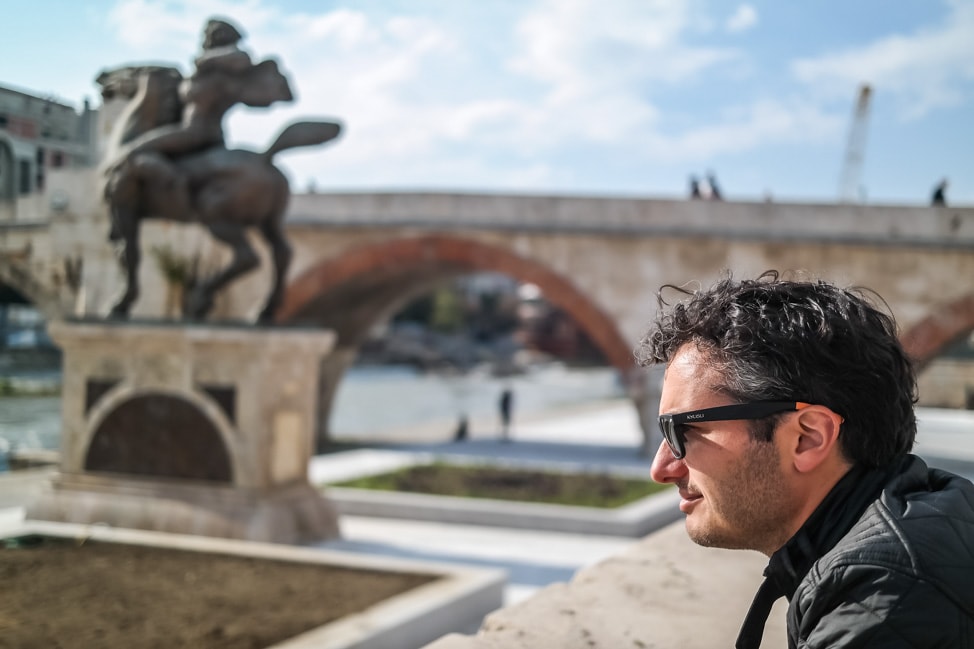
You can’t go far in Skopje without hearing about July 26, 1963. On this date, around 5am, the city fell victim to an earthquake that resulted in the deaths and injuries of thousands. The city’s infrastructure was destroyed. Famously, the old train terminal was never rebuilt and its remaining facade showcases the stopped clock from that day.
Thanks to many helping hands, the city rebuilt, but much of the influence remains visible, like the old red, double-decker city buses, imported from the UK, which still serve as public transport.
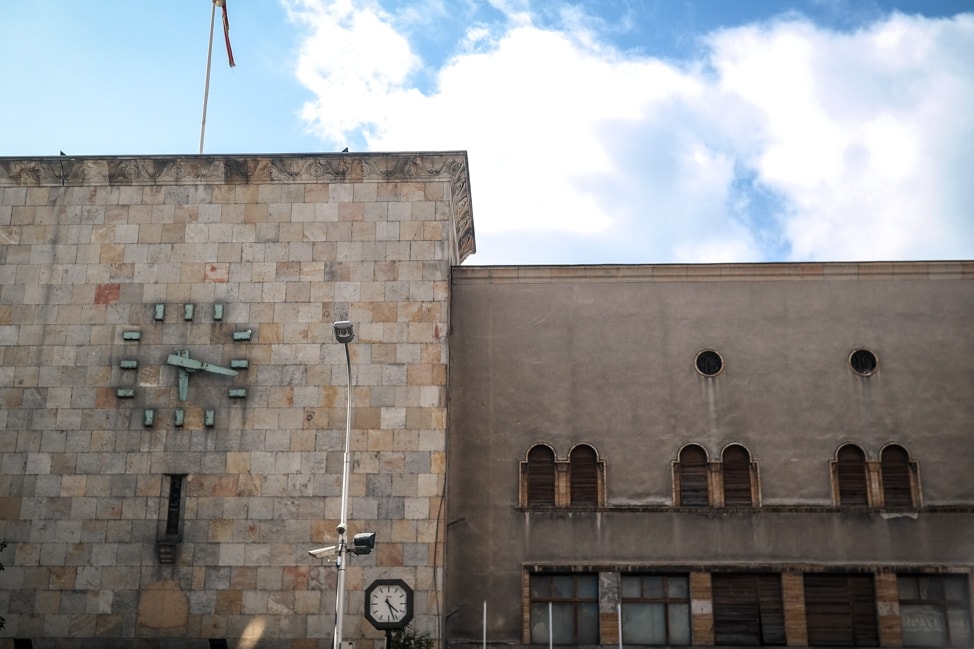
Another famous face in Skopje is Mother Theresa. She was born in Skopje, and residents proudly marked her history here with a free museum and several nearby statues. Albania also claims Mother Theresa as one their own, as her parents were Albanian (by way of Kosovo). Her place of birth has never been contested, and both countries have many buildings, hospitals and monuments commemorating her.
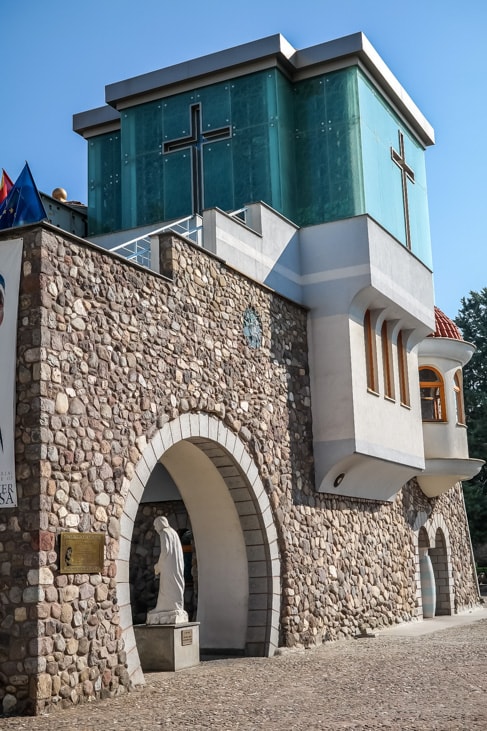
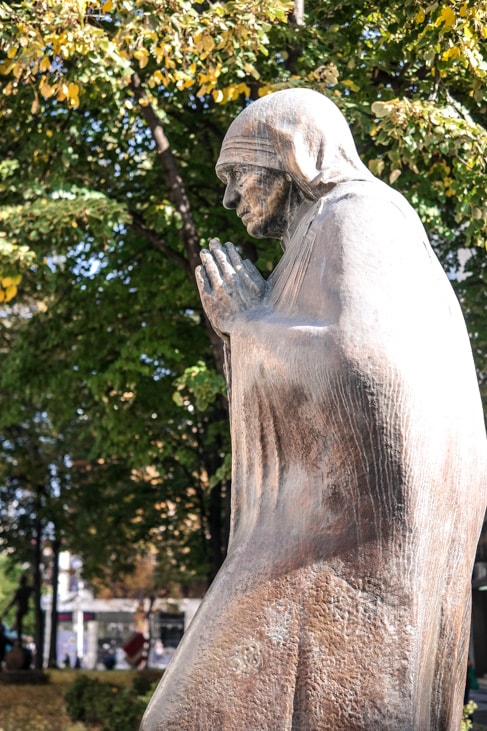
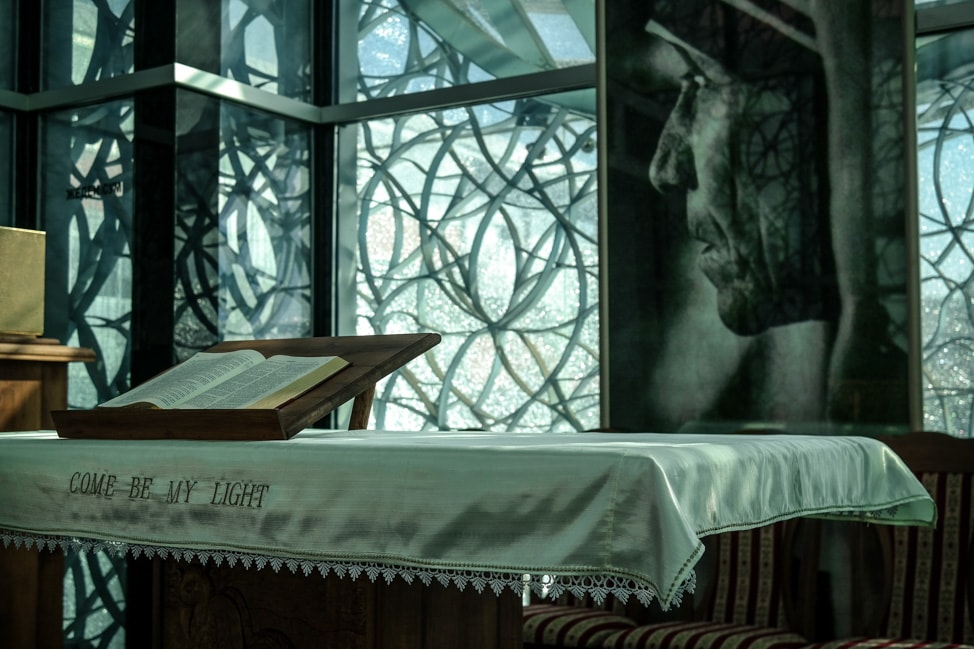
Skopje’s history goes back to at least 4000BC. Remains of Neolithic residences have been found at Kale Fortress (an easy walk from the center of town with great views of the city). It’s had the pleasure of being ruled by at least eight different empires since the Romans, and became an independent republic in 1991.
The influences of these kingdoms are far-reaching. The residents of Macedonia are a multi-cultural bunch, coming from all existing Balkan countries. The food is heavily influenced by the Ottoman empire. The Cyrillic alphabet, a holdover from Serbian rule, is often used in addition to the Latin alphabet.
On our free walking tour of Skopje, our tour guide mentioned that Macedonia Street, one of the main roads leading to the central Macedonia Square, has changed names numerous times just in the past seventy years. In fact, the oldest residents of the street have had their street address changed four times during their lives, as each ruling party altered the name of this main boulevard.
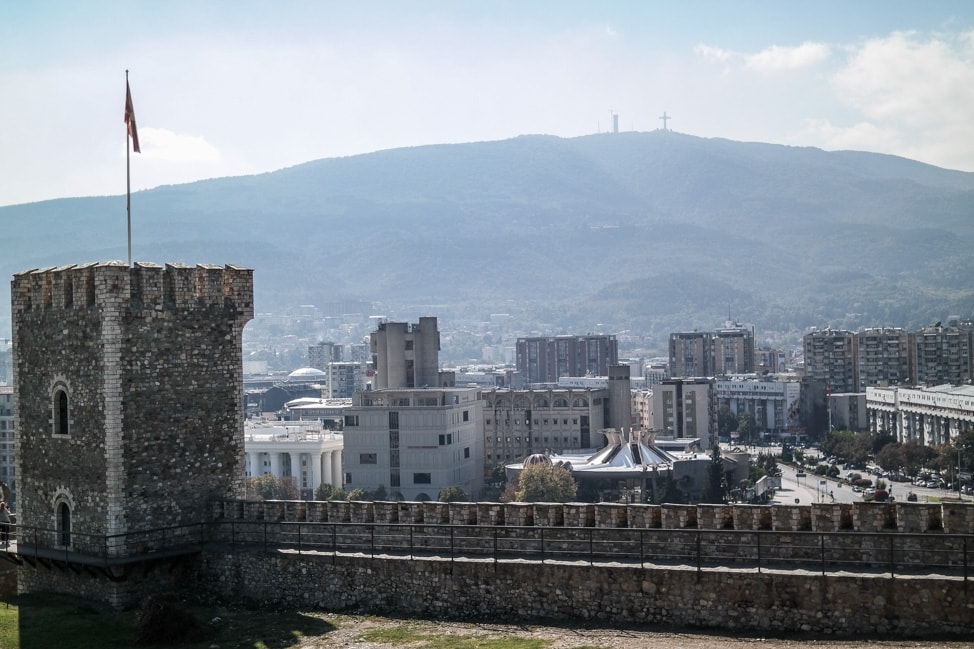
Skopje is also diverse in its religions. While Orthodox Christianity is the most prevalent religion, nearly one third of the population practices Islam. Add in Mother Theresa, and you have a trifecta of religious views readily on display in town. The gorgeous (brand new) Orthodox church below is right next to the Mother Theresa museum. The mosque, open to the public, is up near Kale Fortress.
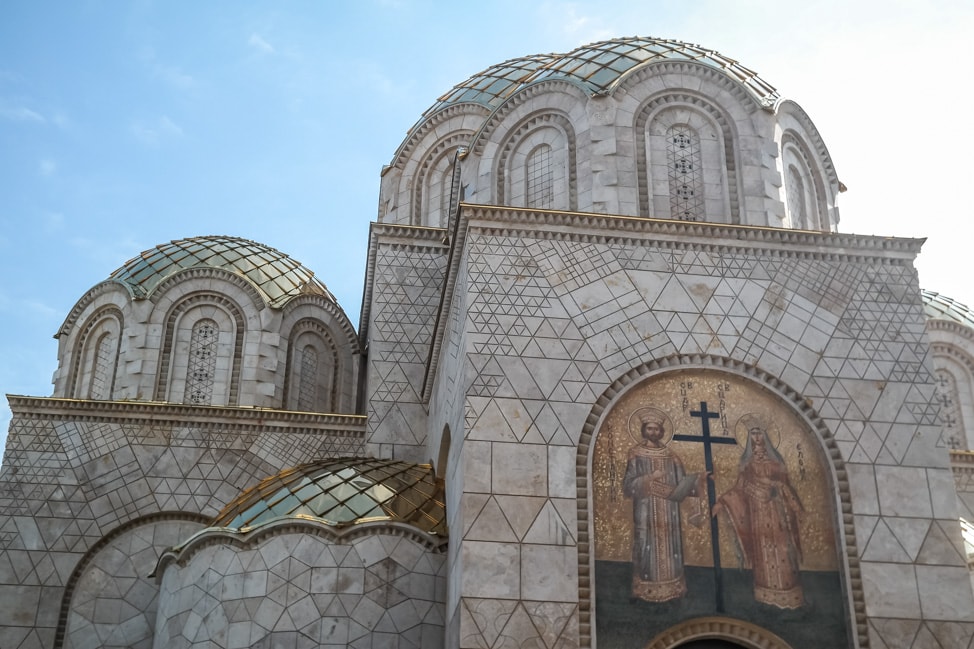
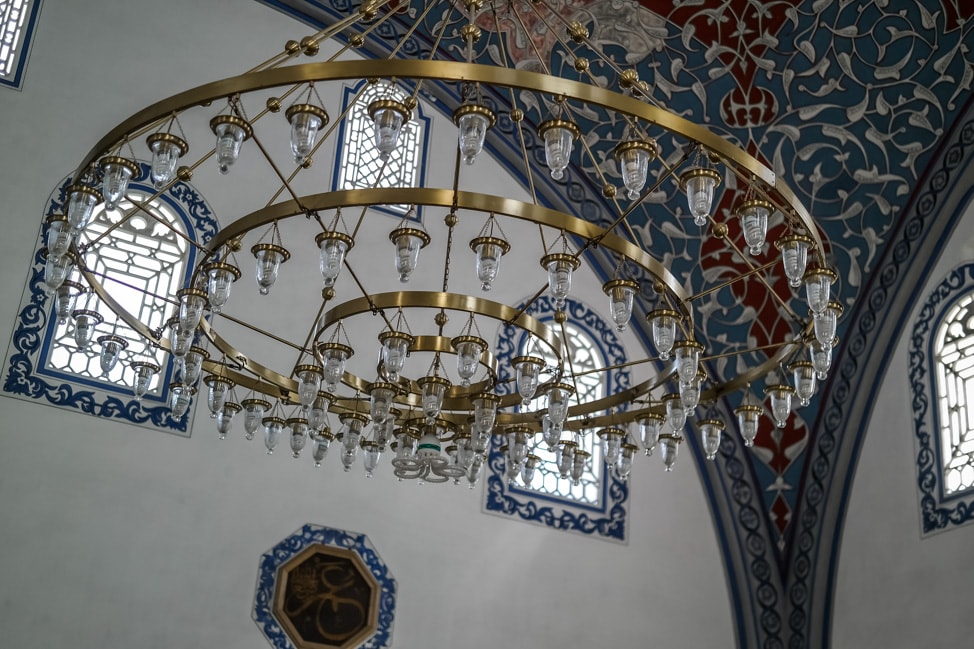
Oh and let’s not forget this guy, ole’ Alexander the Great. He is from this area, and both Macedonians and Greeks celebrate his contribution to the history books. Every time I look at this statue I think of Buzz Lightyear. To infinity, and beyond!
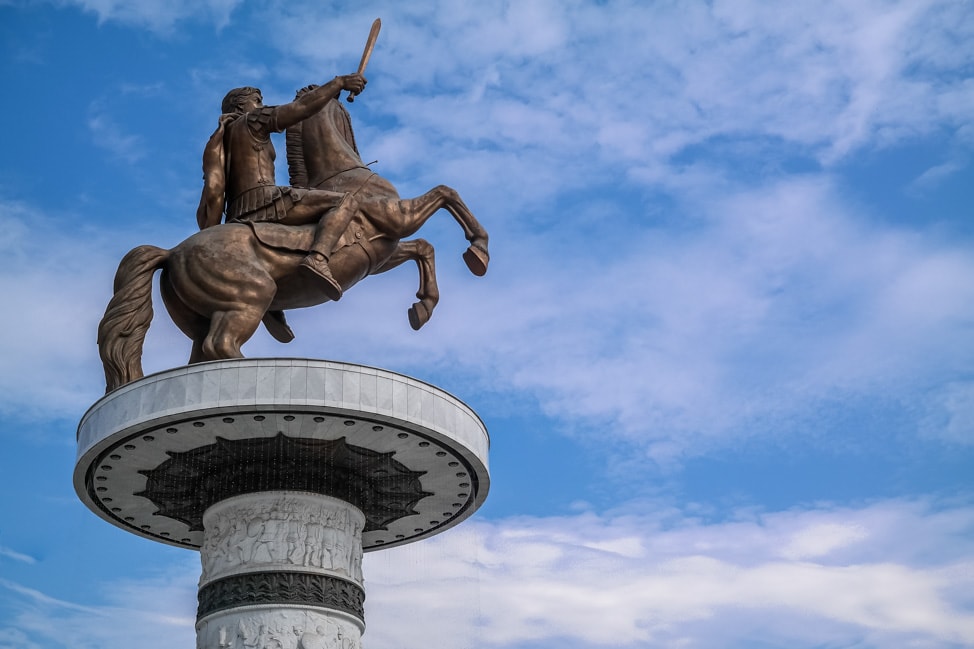
We wrote previously about how the current development project in Skopje is controversial in its scale and design choices. People joke about how Skopje is stealing design and statue ideas from other countries and cultures left and right (like the New York City bull and a small Arc de Triomphe). Even a London Eye and Spanish Steps replicas are under development.
With a history so vast, so far-reaching, it’s also easy to see why Skopje sees itself in many other cultures. It is a civilization that birthed many others. It has been part of the history of much of the world. If any place can pull from Roman, Ottoman, and Western influences and proudly claim it as its own, this is the place.
But the influence of pirate ship standing in the river? Your guess is as good as ours.
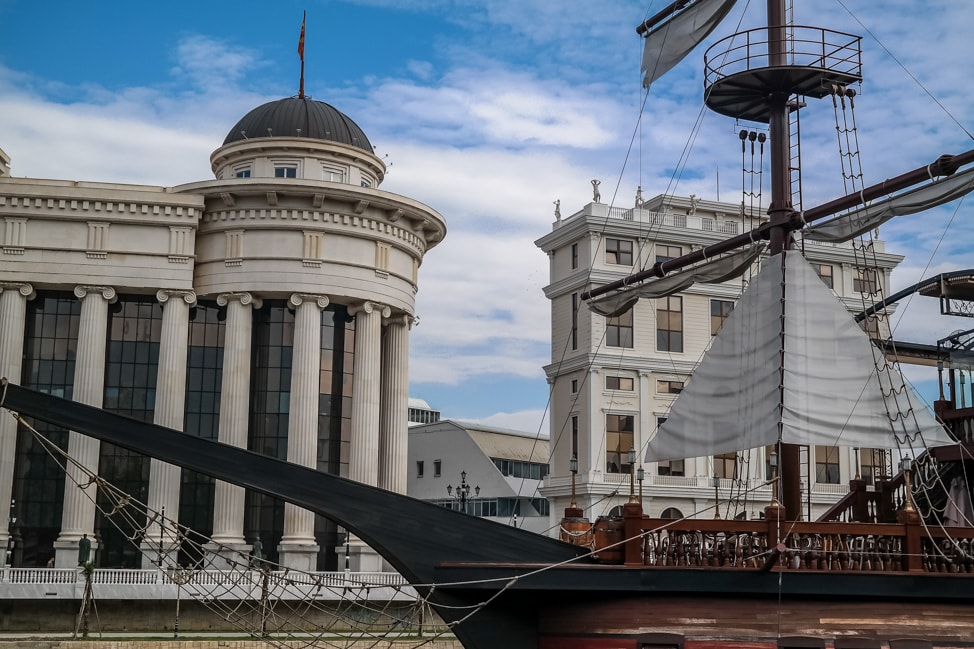
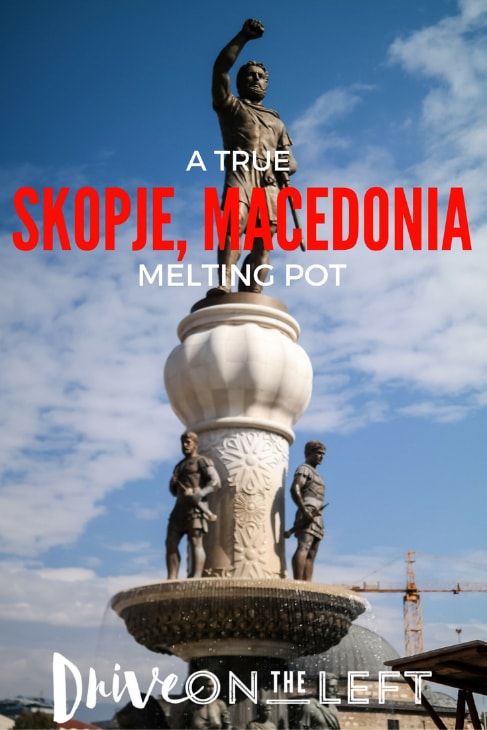

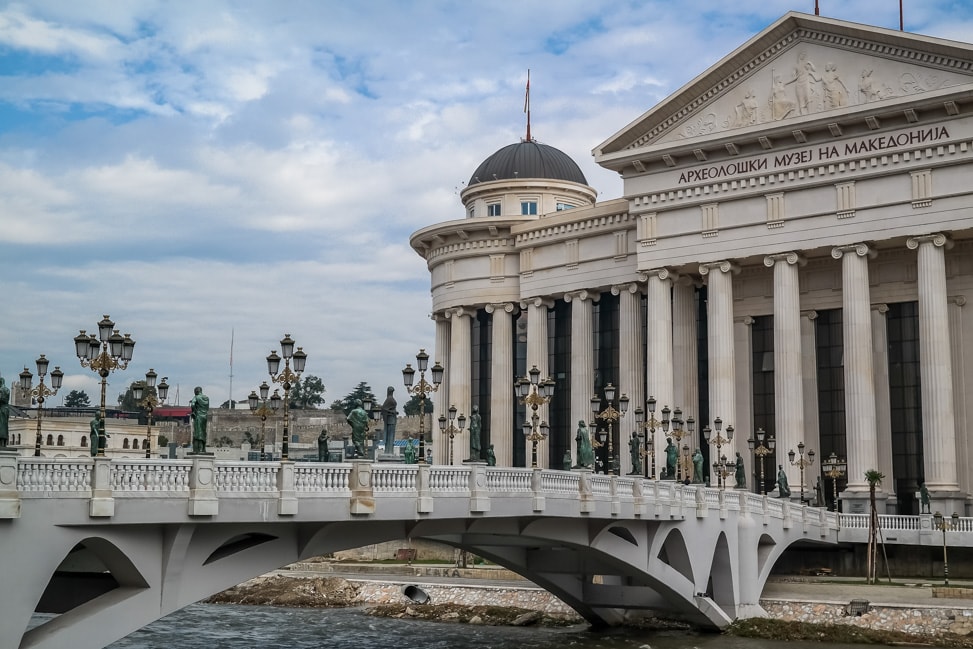










Stumbled upon your blog. Happy I did. Very interesting history and fascinating as this is not a place I would ever have thought of visiting! Makes me wonder what the food was like? Importantly 🙂
Peta
The food in the Balkans is generally pretty good. Not much variation between Serbia, Bosnia, Croatia, and Montenegro. Check out our Balkans food post for more details of the cuisine!
Actually Ohrid is the birthplace of the Cyrillic alphabet. It wasn’t handed down from anywhere.